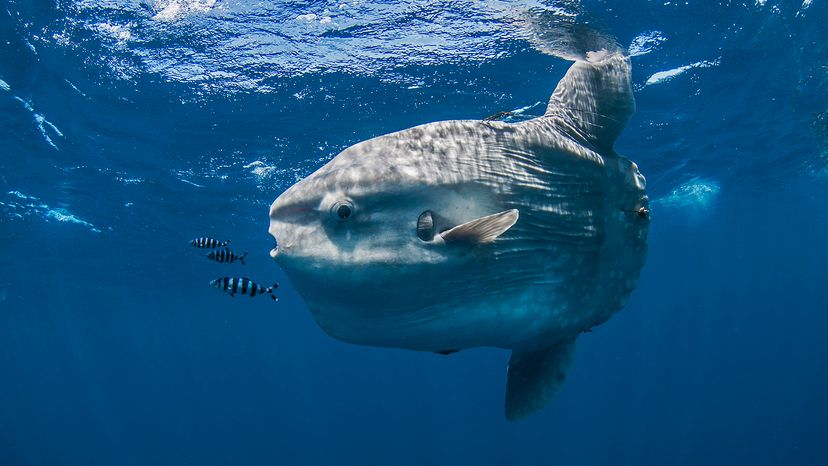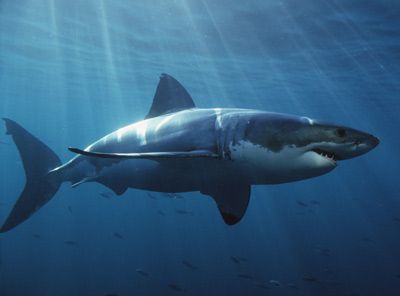
What has a disc-like body, thick lips, boatloads of parasites and probably weighs more than your car? We'll give you a hint: It's a type of fish.
But this isn't some oddball shark. Hammerheads, great whites and their kin are considered cartilaginous fish. That means their skeletons are primarily made of cartilage as opposed to bone. The animal in question belongs to a more modern group: the so-called "bony fishes." (Although, interestingly enough, its skeleton does mostly consist of cartilage. Scientists classify the thing as a 'bony fish' because it evolved from bonier ancestors, but we're getting off-track.)
Advertisement
Ladies and gentlemen, say hello to the ocean sunfish, a creature that's better known by its full scientific name: Mola mola. Compressed laterally (i.e. from side to side) and lacking a traditional tail, adult Mola mola seem kind of awkward at first glance. Something about them just feels off.
Don't be deceived by appearances, however. "[They] may look like the ultimate underdogs (underfish?), but they are truly a well-adapted, immensely successful group of fish with a cosmopolitan distribution and the ability to capitalize on resources that not many other groups consume," Tierney Thys explains in an email.
A marine biologist and science popularizer, Thys specializes in sunfish research. When she isn't conducting research or giving TED talks about these animals, she maintains a website dedicated to them — and she's currently co-editing "the first big academic book on the ocean sunfishes for CRC Press."
The book will have plenty of material to work with. "Just about everything about the sunfishes is unique," Thys says. With their unorthodox swimming style, enormous egg clutches and a thousand other quirks, molas are unlike anything else in the ocean.
Advertisement
